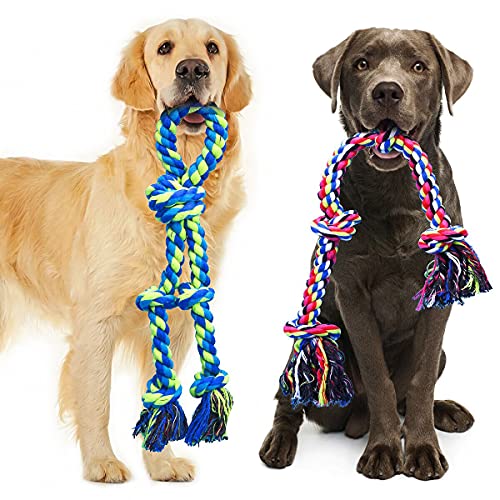Golden Retrievers have a special way of brightening our days with their friendly demeanor and boundless energy. Their gentle nature makes them perfect candidates for therapy work, providing comfort and companionship to those in need. But did you know that there’s a certification process to ensure these furry friends are ready for the job?
Overview of Golden Retriever Therapy Dog Certification
Golden Retrievers are exceptional candidates for therapy work due to their friendly demeanor and strong desire to help others. The certification process ensures these dogs meet the specific standards required for therapy roles.
Importance of Therapy Dogs
Therapy dogs play a crucial role in providing emotional support and comfort to individuals in various settings, including hospitals, schools, and nursing homes. These dogs enhance mental well-being by alleviating stress and anxiety. Golden Retrievers, known for their affable nature, excel in fostering connections and promoting healing in those they visit.
Benefits of Certification
Certification offers several key advantages for Golden Retrievers involved in therapy work. Certification establishes a recognized standard of behavior and temperament, ensuring the dog is well-prepared for diverse situations. Certified therapy dogs typically demonstrate obedience, reliability, and a calm demeanor, making them safe companions for vulnerable populations. Additionally, the certification process enhances trust among therapy recipients, caregivers, and facilities, fostering a positive experience for all involved.
Requirements for Certification
Golden Retrievers seeking therapy dog certification must meet specific standards to ensure their effectiveness. These requirements focus on age, breed characteristics, and training protocols.
Age and Breed Standards
Golden Retrievers must be at least 12 months old for certification. This age allows for maturity and a stable temperament. They should also possess the breed’s signature qualities: friendliness, patience, and intelligence. Certification organizations often require documentation of the dog’s breed, ensuring they align with ideal standards for therapy work.
Training and Assessment
Therapy dogs undergo formal training to develop the necessary skills and behaviors. Basic obedience training is essential, covering commands such as sit, stay, and heel. After basic obedience, dogs participate in an assessment with a certified evaluator. This evaluation checks behavior in various situations, including interactions with people of different ages and backgrounds. Only dogs that demonstrate calmness, friendliness, and reliability during the assessment can proceed to certification.
Certification Process
The certification process for Golden Retriever therapy dogs involves several important steps to ensure these animals are well-prepared for their roles. Following these steps guarantees that the dogs meet necessary behavior standards and possess the required temperament.
Steps to Achieve Certification
- Age Requirement: Dogs must be at least 12 months old, ensuring maturity and emotional stability.
- Training Protocols: Dogs undergo basic obedience training, covering commands like sit, stay, and come.
- Evaluator Assessment: Each dog must pass an evaluation conducted by a certified evaluator. This assessment tests their behavior in various real-world situations.
- Documentation: Owners must provide proof of the dog’s breed to verify it aligns with therapy standards.
- Health Check: A veterinarian’s assessment may be necessary to confirm overall health and well-being.
- Ongoing Education: After certification, continued training and refreshers help maintain a dog’s skills and temperament.
Evaluating the Dog’s Temperament
Evaluating a Golden Retriever’s temperament is a crucial factor in the certification process. In this evaluation, the following characteristics are assessed:
- Friendliness: Dogs should display a natural inclination toward people, showing trust and approachability.
- Calmness: A stable, calm demeanor is essential, particularly in high-stress environments.
- Reliability: Dogs must respond consistently to commands and exhibit good manners in various situations.
- Patience: Dogs should handle different stimuli and environments without becoming anxious or overly excited.
- Adaptability: They must adjust well to new surroundings, which helps them thrive in diverse therapy settings.
By focusing on these steps and temperament traits, the certification process ensures that Golden Retrievers excel in their vital roles as therapy dogs, providing companionship and support to those in need.
Organizations Offering Certification
Various organizations offer therapy dog certification for Golden Retrievers, ensuring they meet the necessary standards for providing support and companionship. These organizations typically fall into two categories: national certification programs and local certification options.
National Certification Programs
National organizations set comprehensive standards for therapy dog certification. Programs like the Alliance of Therapy Dogs (ATD) and the Therapy Dogs International (TDI) provide structured training requirements and evaluations.
- Alliance of Therapy Dogs: ATD focuses on recognizing the incredible work performed by therapy dogs across the U.S. It requires dogs to complete specific training, demonstrate good behavior, and pass an evaluation that assesses their interactions in different settings.
- Therapy Dogs International: TDI emphasizes certification through training and assessment of behavior, offering guidance on how to prepare dogs and handlers for therapy work. They provide resources on effective training techniques, ensuring that therapy dogs are mentally and physically ready for their roles.
These national programs offer credibility and recognition, allowing therapy teams to work in various environments, from hospitals to schools.
Local Certification Options
Local organizations may provide therapy dog certification with requirements tailored to specific communities. Many local programs collaborate with regional hospitals, schools, or care facilities to meet unique needs.

- Pet Partners: With local chapters in various regions, Pet Partners focuses on establishing pet therapy programs in specific communities. They offer training, comprehensive evaluations, and resources for handling various therapy scenarios.
- Local Animal Control or Rescue Groups: Some animal organizations conduct their own certification processes. These groups often emphasize community service and place a strong focus on building relationships with local health and educational institutions.
« Essential Mobility Aids for Senior Golden Retrievers: Enhance Their Quality of Life
Essential Golden Retriever Service Dog Equipment for Optimal Support and Training »
These local certifying bodies enhance community involvement and foster connections between therapy dogs and those in need of support.
Conclusion
Getting a Golden Retriever certified as a therapy dog is a rewarding journey that not only benefits the dog but also enriches the lives of those they help. Their natural friendliness and calm demeanor make them perfect companions in various settings.
I’ve seen firsthand how therapy dogs can bring joy and comfort to individuals facing challenges. By following the certification process, we ensure these wonderful dogs are ready to provide the love and support that many people desperately need.
If you’re considering this path for your furry friend, I encourage you to take that step. It might just be one of the best decisions you make for both you and your Golden Retriever.

















